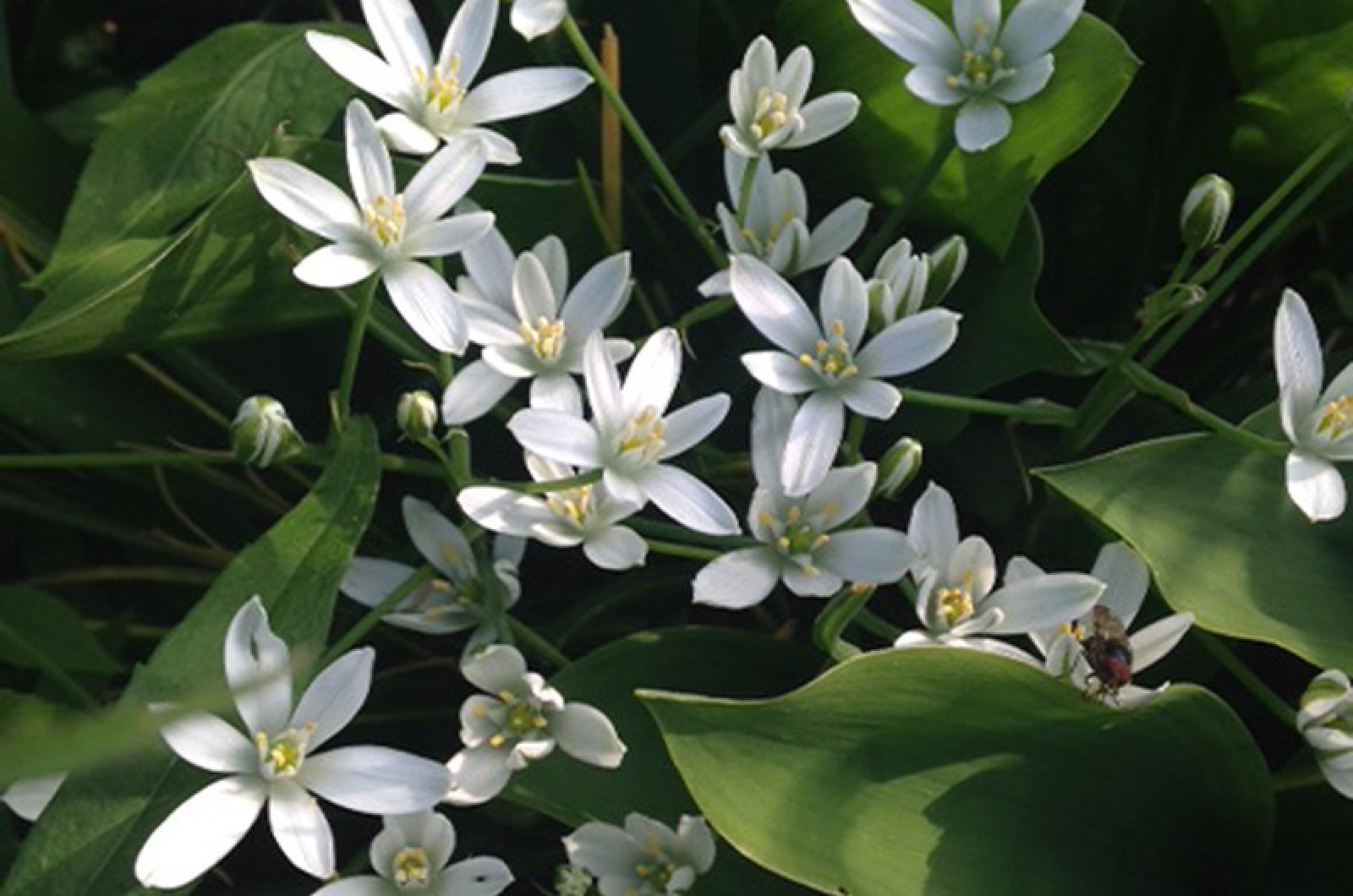Mother Nature has put on quite a star show in the last few weeks.
Not in the sky, but down by your feet. The subtle stars of the show are little six-petalled flowers growing in clumps along roadsides and in fields and yards across the Island.
You might have missed these trifling blossoms due the profusion of bigger and showier blooms, but their presence could be considered a small miracle.
Star of Bethlehem takes its name from the heavens. As the story goes, God created a star in the sky to guide the wise men to the Christ child. The star was too beautiful to banish from the universe after the child was found, so the star burst into thousands of pieces and descended to earth. These bits gave rise to the flower Ornithogalum umbellatum, commonly called star of Bethlehem.
That is not this plant’s only religious affiliation. In 2 Kings 6:25, mention is made of “dove’s dung,” a plant believed to be star of Bethlehem that was valued as food during the great famine in Samaria and during later pilgrimages to the Holy Land. Some further explanation of these stories would be helpful, not only for the choice of a plant with that name as food, but its effectiveness as food at all.
Star of Bethlehem is known to be toxic to livestock and pets, and is questionable as a human foodstuff despite these historic references. Though some sources cite the bulb as having medicinal and edible qualities, others maintain that even small amounts can cause death. It might just take an act of
God to save you should you consume it. Even skin contact with this plant can be problematic, causing dermatitis to those with sensitivities.
Dove’s dung is only one of star of Bethlehem’s aliases — it is also called wonder flower, snow drop, Arabian star flower, or grass lily. But its scientific name is perhaps the most curious. Translation of Ornithogalum is bird milk, and may refer to its milk-colored flower. Or it may suggest that, like the rare bird that gives milk (there are a few), it is an incredible and wondrously rare thing.
This winter bulb of the lily family resembles wild onion or garlic with its thin, grass-like leaves, but is easy to distinguish since it lacks the allium odor associated with the crushing of the former varieties. Two identification clues are easily seen, and include the presence of a white line on the mid-rib of the leaf, and a green stripe on the underside of each flower petal.
Each plant boasts clusters of up to 30 flowers. Due to its ability to spread easily, these white blooms can appear to cover an area. Some even consider star of Bethlehem an unholy pest, as they aren’t native to this country and can quickly consume an area through the spreading of their underground bulbs.
As a perennial, star of Bethlehem can be counted on to resurrect itself every year, and it clearly takes to heart the Biblical admonition to be fruitful and multiply in late spring. However, these flowers will fade before summer gets started in earnest, making for a fleeting floral feast that, too, shall pass.
Suzan Bellincampi is director of the Felix Neck Wildlife Sanctuary in Edgartown, and author of Martha’s Vineyard: A Field Guide to Island Nature.




Comments (1)
Comments
Comment policy »